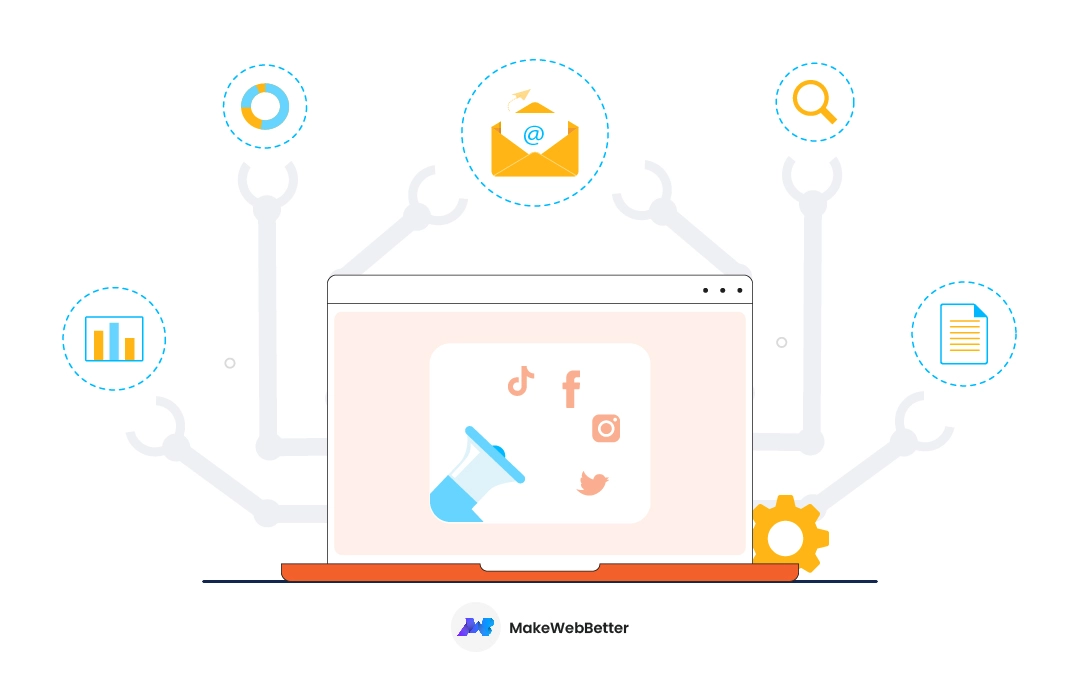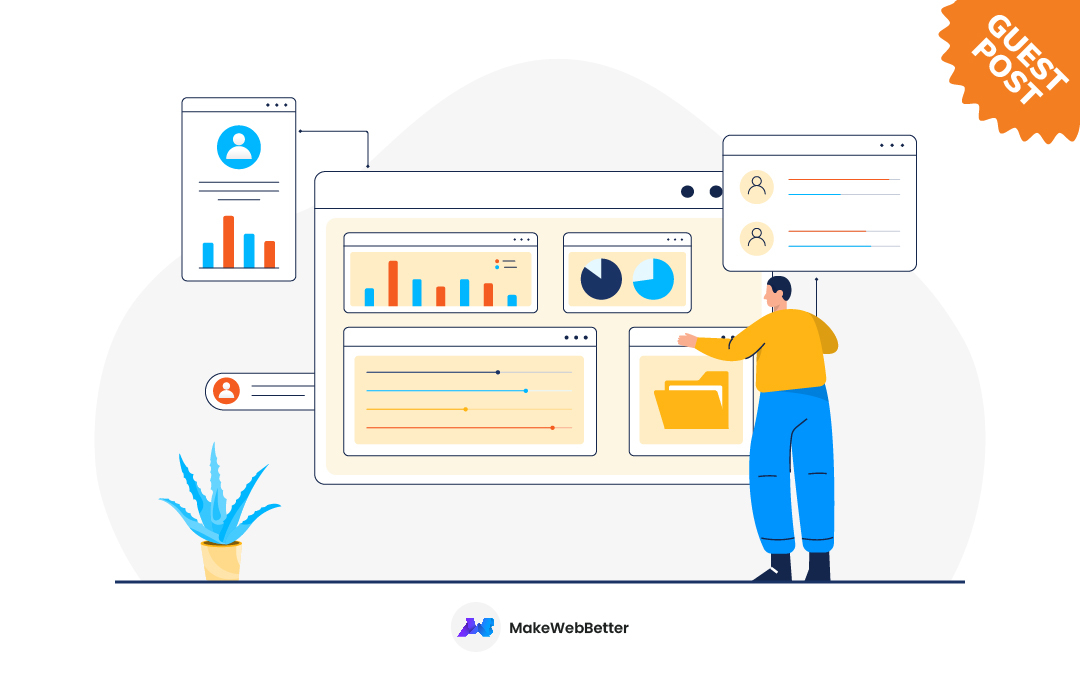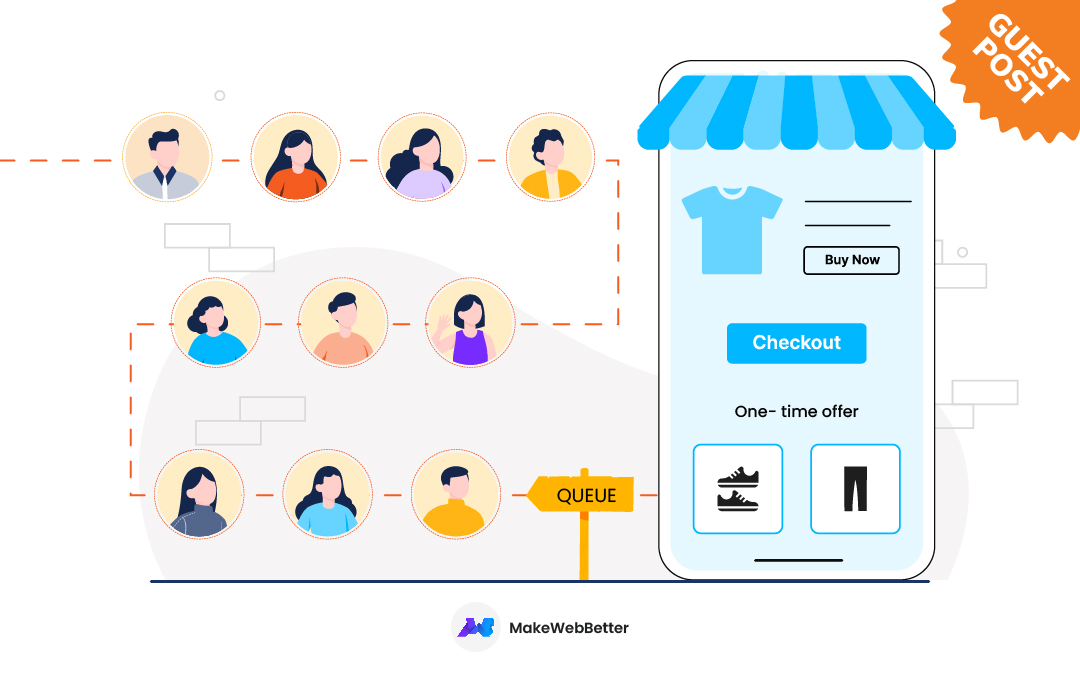In today’s fast-paced business world, staying ahead of your competition is almost half a company’s success.
Marketing automation is a handy set of tools for businesses of all sizes. With the right strategy, it can help streamline your marketing efforts, increase your revenue, and make your life easier.
However, many people are intimidated by the idea of implementing marketing automation mainly because of its technical aspects. Although, it’s worth noting that today’s tools simplify the process to a great extent.
In this beginner’s guide, we’ll walk you through everything you need to know to get started with marketing automation and use this knowledge in every part of your marketing efforts. These tips apply to every marketing automation platform, so let’s get started.
Table of Contents
- What Is Marketing Automation?
- How to Start With Marketing Automation
- The Role of Email Marketing
- Automating Your Social Media
- Lead Generation and Nurturing
- What Is Lead Generation and nurturing
- Lead Nurturing Best Practices
- Reporting and Analytics
- Choosing the Right Marketing Automation Tool
- Implementing Marketing Automation
- Common Marketing Automation Mistakes to Avoid
What Is Marketing Automation?
If you’re new to the marketing world, you might be wondering what all the fuss is about marketing automation. Let’s break it down.
At its core, marketing automation is the process of using software to automate repetitive marketing tasks. This could include things like sending emails (through your web host’s control panel or using another tool), posting on social media, and managing your customer database.
The Benefits of Marketing Automation
So, why should you care about marketing automation? There are numerous benefits, so let’s go through them below:
- Save time: Automating routine tasks allows marketers to focus on strategy, content, and other high-value activities that can improve ROI.
- Improve customer engagement: By providing a personalized experience, marketing automation can increase customer engagement and loyalty.
- Optimize marketing campaigns: By analyzing data and insights, marketing automation can help businesses optimize campaigns for better results.
- Increase revenue: Marketing automation can help businesses generate more leads, nurture those leads more effectively, and, eventually, close more deals.
In the following sections, we will dive deeper into the benefits of marketing automation and explore how businesses can use it to achieve their marketing goals.
Marketing automation can also help you improve your customer experience. By personalizing your messaging and automating follow-up communications, you can make sure that your customers feel heard and valued.
Finally, marketing automation can help you drive revenue. By automating lead nurturing and other key aspects of the sales process, you can move prospects through the funnel more efficiently and close more deals.
Examples of Marketing Automation in Action
To start with marketing automation, you first have to see some real-world examples of how it works and how it’s done.
- Email marketing automation: If you’re running an eCommerce store, you might use marketing automation to send abandoned cart emails to customers who leave items in their shopping cart without completing their purchase.
- Social media automation: Let’s say you’re a marketing agency managing social media accounts for multiple clients. You might use marketing automation tools to schedule and post content across different platforms, saving time and ensuring your clients’ accounts stay active.
- Lead nurturing automation: If you’re a B2B company, you might use marketing automation to nurture leads through the sales funnel. This could include sending personalized emails, offering content downloads, and sending targeted messaging based on user behavior.
Overall, marketing automation is a powerful tool that can help businesses of all sizes improve their marketing strategies. In the next section, we’ll walk you through how to get started with marketing automation.

How to Start With Marketing Automation
Now that you understand the basics of marketing automation, it’s time to start. But first, you need to note a few things, as they will massively help your efforts later. Four are the most important things to note when starting with marketing automation.
Identify Your Marketing Goals
Before diving into marketing automation, you must identify your brand’s goals. What do you want to achieve with your marketing efforts? Do you want to increase sales, generate more leads or improve customer retention? Once you have a clear understanding of your goals, you can start to develop a strategy for achieving them using marketing automation.
Find Your Target Audience
Next, you need to identify your target audience. Who are you trying to reach with your marketing messages? What are their pain points and interests? By understanding your audience, you can create more effective messaging and campaigns that resonate with them.
A great way to understand your audience is by figuring out your ideal customers, which can lead you to design buyer personas based on their characteristics.
Choose the Right Marketing Automation Platform
Once you clearly understand your goals and target audience, it’s time to choose the right marketing automation platform. There are many options out there, so it’s important to research and choose one that meets your specific needs. Look for a platform that offers the features you need, such as email automation, social media scheduling, and lead scoring.
Create a Plan and a Timeline for Implementation
Now that you have your goals, target audience, and platform in place, it’s time to create a plan and set a timeframe for implementation. This should include a detailed outline of the campaigns and workflows you’ll create and a timeline for when each element will be implemented. Make sure to allocate enough time for testing and optimization to ensure your campaigns are as effective as possible.
By following these steps, you’ll be well on your way to implementing a successful marketing automation strategy. In the next section, we’ll dive into some best practices for creating effective marketing automation campaigns and the role of email marketing in the whole process.

The Role of Email Marketing
Email marketing has become critical to any successful marketing campaign. In today’s digital age, businesses can’t afford to overlook the power of email in engaging with their customers and driving conversions. Through email, companies can reach their target audience directly with tailored content that speaks to their interests and needs.
One of the key advantages of email marketing is its ability to automate the email-sending process. Automation not only saves time and resources but also ensures that the right message is delivered to the right person at the right time. Various types of emails can be automated to help businesses achieve their marketing goals.
Welcoming Emails
Welcome emails are the first point of contact with new subscribers and can set the tone for the rest of the customer journey. So you already understand how important it is to grab users’ attention and make them stay on your website. Automated welcome emails should be personalized, informative, and engaging. They should provide an overview of the brand, its values, and its products or services while offering incentives to encourage subscribers to make their first purchase.
Promotional Emails
Sending users these emails can be used to announce new products or services, special offers, or upcoming events. These emails should be visually appealing and highlight the brand’s unique value proposition while providing a clear call to action.
Abandoned Cart Emails
These types of emails can help to recapture potential sales that may have been lost. People are involved in many things daily, so reminding them about something they might need is an excellent way to increase sales.
Abandoned cart emails are triggered when customers add items but don’t complete the checkout process. By sending a timely and personalized email reminding them of their “abandoned” products, businesses can entice customers to return to their site and complete their purchase.
Re-engagement Emails
Last but not least, re-engagement emails can be sent to inactive subscribers who have not engaged with the brand for a certain period. By offering special promotions or incentives, businesses can encourage these subscribers to become active again and re-engage with their content or make them stroll through the shop again.
From welcome emails to promotional emails, various types of automated emails can help businesses achieve their marketing goals and build lasting relationships with their customers.

Automating Your Social Media
Social media is in our daily lives, and due to that, it is an indispensable marketing tool for businesses of all types and sizes. With billions of users worldwide, social media platforms offer companies a unique opportunity to connect with their target audience and build brand awareness like never before.
However, managing multiple social media accounts can be time-consuming and overwhelming. That’s exactly where social media automation comes in.
By automating specific tasks, such as scheduling posts, businesses can save time and resources while maintaining an active and engaging presence on social media. Here are some best practices for creating successful social media campaigns and tips for optimizing them through automation.

Best Practices for Creating Social Media Campaigns
- Know what your audience wants: Before creating any social media content, it’s essential to understand your target audience. What are their interests? What type of content do they engage with most? What is their preferred tone of voice? You can increase engagement and drive conversions by tailoring your content to your audience.
- Create a content calendar: A content calendar can help you stay organized and ensure that you’re consistently posting high-quality content. It’s important to vary the types of content you post, such as images, videos, and infographics, to keep your audience engaged. Even one piece of content daily is enough to start building your presence on social media.
- Monitor your metrics: Monitoring your social media metrics, such as likes, comments, and shares, can help you identify what’s working and what’s not. Use this data to optimize your content and strategy over time. Before even using a marketing automation tool, start using each platform’s service to understand how they work. Marketing automation tools are similar, albeit with more features for you to explore.
Tips for Optimizing Social Media Campaigns
- Use automation tools: Social media automation tools like Hootsuite or Buffer can help you schedule posts in advance and monitor multiple accounts from a single dashboard. This saves time and ensures that you’re consistently posting high-quality content.
- A/B test your content: A/B testing involves creating two versions of the same post and measuring which one performs better. This can help you identify the most effective messaging, images, and calls to action for your audience. This technique is helpful with plenty of content, from landing pages to emails and ads, because it can show you the things people like the most about your brand.
- Leverage user-generated content: User-generated content, such as customer reviews or photos, can be a powerful tool for building trust and increasing engagement. By sharing user-generated content, you can also save time and resources on content creation.
Lead Generation and Nurturing
Now, we’re moving to lead generation and nurturing – two critical components of any successful marketing strategy. Lead generation involves identifying potential customers and collecting their information, while lead nurturing involves building relationships with those leads over time to eventually convert them into paying customers.

What Is Lead Generation and nurturing?
Lead generation can take many forms, such as content marketing, social media advertising, or email campaigns.
The goal is to attract potential customers to your business and encourage them to provide their contact information, such as their email address or phone number. Once you have their information, you can begin nurturing those leads through targeted and personalized communication.
Lead nurturing involves providing value to your leads over time through educational content, personalized messaging, and special offers or promotions. The goal is to build trust and establish a relationship with your leads so that when they’re ready to make a purchase, they will choose your business over a competitor.
Creating a Lead Magnet
A lead magnet is an incentive that you offer potential customers in exchange for their contact information. It can take many forms, such as an ebook, webinar, or free trial. The key is to offer something of value to your target audience that is relevant to your business and helps to solve a problem or address a pain point.
When creating a lead magnet, it’s vital to focus on the benefits to the customer rather than the product’s features. This will attract the right audience and encourage them to provide their contact information.
Creating Landing Pages
Once you have your lead magnet, you need a landing page to promote it and collect leads. A landing page is a standalone page on your website that is designed to convert visitors into leads. It should be visually appealing, focused on the benefits of your lead magnet, and include a clear call-to-action for visitors to provide their contact information.
When creating a landing page, it’s important to keep it simple and focused. Avoid including too much information or distracting elements that could take away from the main message. By focusing on the benefits of your lead magnet and providing a clear call-to-action with clean visuals, you can increase the chances of converting visitors into leads.
Lead generation and nurturing are paramount to any marketing strategy. By creating a lead magnet that offers value to your target audience and using landing pages to collect leads, you can attract potential customers and build relationships with them over time. You can then nurture those leads through targeted and personalized communication and convert them into paying customers.

Lead Nurturing Best Practices
Now that you know about lead nurturing, it’s time to move to the next step which is finding and following the best practices. Some key strategies to remember are:
- Personalize your communications: Use data and insights to tailor your messaging to each individual prospect.
- Provide value: Offer helpful content and resources that address your target audience’s needs and pain points.
- Be consistent: Set up a regular communication cadence to stay top-of-mind with your prospects. You can also create a calendar for that or use automation tools and write predefined templates.
- Use multiple channels: Experiment with different channels like email, social media, and direct mail to reach your prospects where they are, depending on your business type.
- Measure and optimize: Continuously track your results and adjust your approach based on what’s working (and what’s not).
Reporting and Analytics
Measuring the success of your lead nurturing efforts requires robust reporting and analytics capabilities. By tracking key metrics like open rates, click-through rates, conversion rates, and ROI, you can gain valuable insights into what’s working and where there’s room for improvement. Some best practices for reporting and analytics include:
- Define clear goals and KPIs upfront
- Use a centralized dashboard to monitor performance across all channels
- Regularly review your data to identify trends and opportunities
- Share insights with key stakeholders across the organization
Choosing the Right Marketing Automation Tool
To effectively implement lead nurturing best practices, you’ll need a marketing automation tool that can help automate workflows, personalize communications at scale, track engagement across multiple channels, and provide robust reporting capabilities. When choosing a marketing automation tool, consider factors like:
- Ease of use
- Customer support
- Customization options
- Pricing models
- Integrations with other tools in your tech stack
While many prefer to put pricing on top of all features, we like to have it somewhere in the middle. A great automation tool has to be easy to work with and have excellent customer support to answer all your challenging questions.

Implementing Marketing Automation
Having all this data available at your fingertips requires careful planning, and, at first, it might seem confusing. But in reality, creating and editing workflows (editing your manual methods) and performing actions based on all that data can deliver great results over time – and save you some for more important matters.
Some key steps in implementing marketing automation include:
- Define clear goals upfront
- Audit existing processes to identify areas for optimization
- Create detailed workflows that map out how leads will move through the funnel
- Customize messaging based on persona segments or other criteria
- Test everything before going live!
- Monitor performance regularly and make adjustments as needed
Common Marketing Automation Mistakes to Avoid
Marketing automation is a powerful tool for streamlining your marketing efforts, but there are also some common mistakes businesses make when implementing it. Here are five to watch out for:
- Neglecting the human touch: While marketing automation can automate many tasks, it’s important to remember that customers still crave a personal connection. Make sure to balance automation with personalization, such as sending targeted emails based on customer behavior or providing personalized recommendations.
- Focusing too much on quantity over quality: Using marketing automation to blast out as many messages as possible is tempting. But it might lead to a high unsubscribe rate and negatively impact your brand reputation. Instead, focus on providing value and building relationships with your customers.
- Ignoring data and metrics: If you’re not paying attention to that data, you could miss out on improvement opportunities. Make sure to regularly review your metrics and make adjustments as needed.
- Forgetting to test and optimize: Just because you’ve set up an automated campaign doesn’t mean it’s perfect. Testing and optimization are key. Regularly test different messaging, subject lines, and calls to action to see what resonates best with your audience.
- Overcomplicating things: Marketing automation can be complex, but it doesn’t have to be overly complicated. Keep your campaigns simple and focused on your core business goals. Avoid adding unnecessary complexity or automating tasks that don’t add value.
Conclusion
Marketing automation can be described as a game changer in the marketing realm and a tool that generates great results. Automating repetitive tasks and leveraging data and metrics can save time, improve targeting, and build stronger relationships with your customers.
Throughout this journey, we’ve covered various topics related to marketing automation, from lead generation and nurturing to social media automation and email marketing. We’ve also highlighted some common mistakes to avoid and shared best practices for optimizing your campaigns.
To recap, some of the key takeaways include:
- Personalization is critical to building strong customer relationships
- Quality over quantity when it comes to messaging
- Regularly review and optimize your campaigns based on data and metrics
- Keep your campaigns simple and focused on your business goals
- As you explore marketing automation for your business, remember to stay focused on your customers and their needs. By providing value and building relationships, you can create long-lasting brand loyalty and drive results for your business.
So what do you think? Do you have a marketing automation plan ready for your business?










